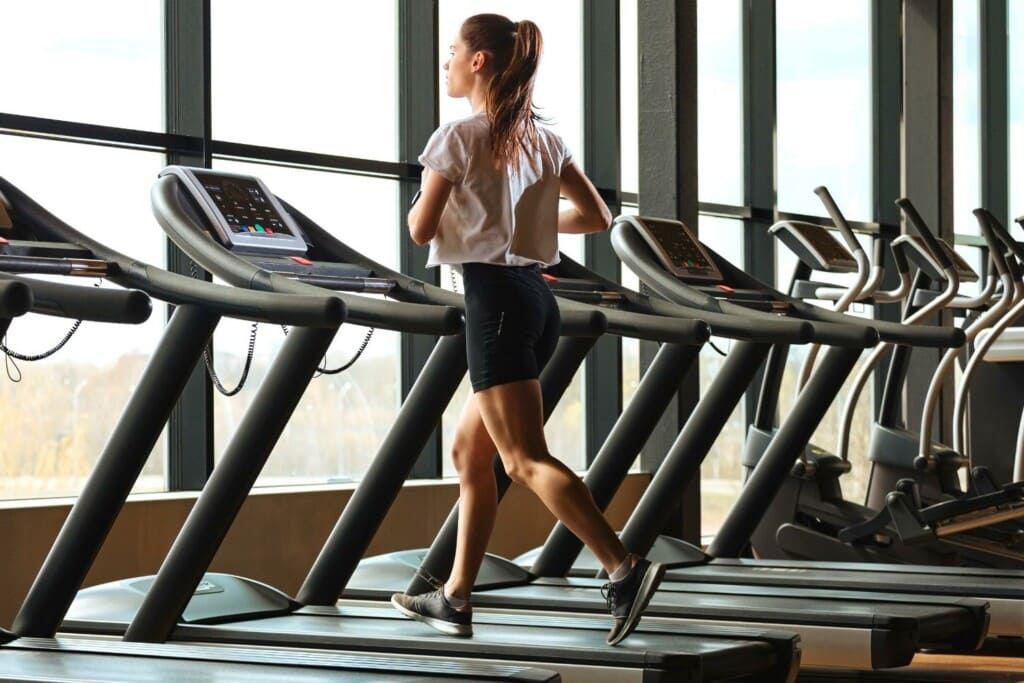Published on: 09/02/2022
Most of us start running to spend time outdoors and enjoy the fresh air. So, treadmill workouts will not be the first thing that comes to mind, even for beginner runners. However, running on a treadmill can be beneficial, especially when running outdoors isn’t an option or when there are some key elements of your running you’re looking to train for.
While it’s easy to learn how to run on a treadmill, most beginner runners make mistakes that can be avoided with a bit of research. Treadmill running can help improve your running form, can complement your outdoor running and can bring you lots of benefits if done right.
Read on to find out how it all works, why a treadmill is not as dull as you might think, and how to use treadmill workouts to boost your overall running performance.
Anatomy of a Treadmill: What You Need to Know Before You Start
So, how does a treadmill work, and what do you need to know before you start treadmill running? Firstly, not all treadmills are the same! There are lots of different options and types. We’ll also cover how to use a treadmill safely in the gym, in a hotel, or at home.
How treadmills work
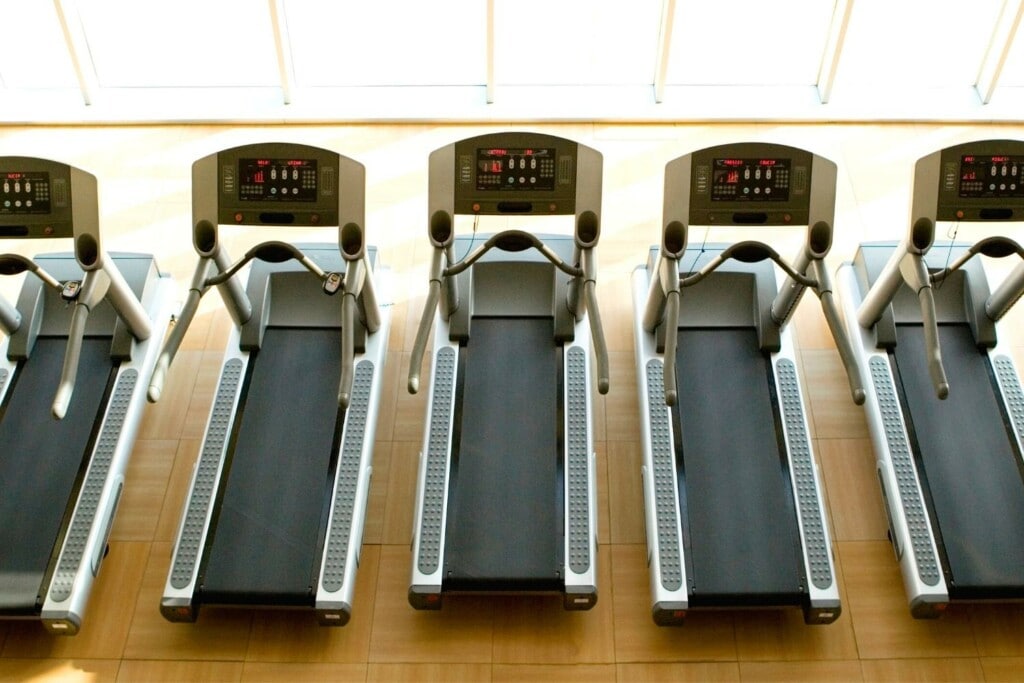
Most treadmills are motorized, where an internal engine makes the running belt move at the speed you’re programming it to from the central control panel. This engine usually has a power of 1.5 to 3 horsepower (1), giving it enough energy to move the treadmill belt as you walk, jog or run at full speed.
Many variations influence the performance of a treadmill and, therefore, the running you can do on it:
Treadmills with lots of uphill capacity
Typically, the deck of a treadmill can be inclined upwards to about 10%-12% of a slope. This makes treadmill running a bit more fun and reflective of outdoor running, and some machines have built-in workout options that vary the incline to mimic going up and down hills outside. However, if you’re training for hilly courses or are looking to use the treadmill for mountain running (2) strength building, you’ll want the incline to go even higher. Most treadmills in the gym might go to 15% – enquire with manufacturers if you’re buying one for yourself.
Curved treadmills
These are nonmotorized and have a concave deck for the belt to move on. The design makes it so that when you run, you’re pulling the treadmill belt back and down with your stride, which causes it to move at the same rhythm you are. The big advantage of this style of treadmill (3) is that you can power it all yourself, but it’s not ideal for a beginner runner who might want a bit of help from the engine.
Treadmills with built-in workouts
Some treadmills can be pretty plain, only allowing you to set the speed and the incline you move at. However, more modern ones feature a control panel with multiple built-in treadmill workouts, so you don’t even need a coach to get going! These include variable speed or intervals, varying inclines, a mix of both, and more. However, be careful: always be prepared to adjust speed or incline when doing these workouts, as they are built universally and have no means of perceiving if you are coping well with the intensity.
When would you use a treadmill?
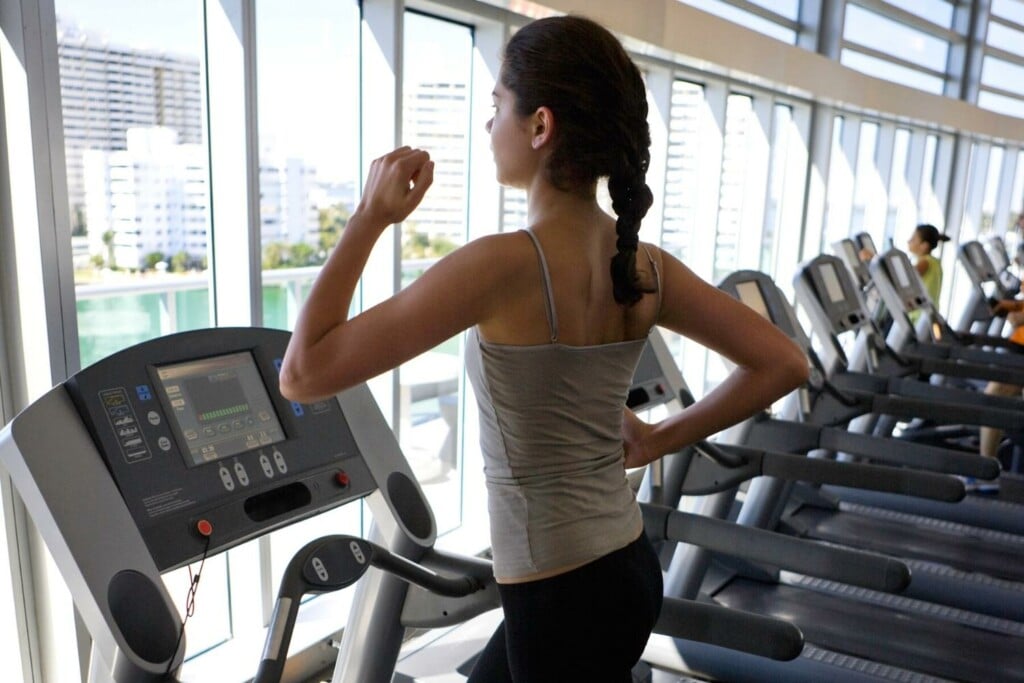
There are obvious times when you might reach for a quick treadmill workout: you’re traveling, and the hotel you’re staying in has one, or the weather is awful, and you can quickly head to the gym and run indoors. But that’s not all!
Many people use treadmill runs as their main workouts. These can include:
- Speed workouts where you use the treadmill power to boost your pace during interval training;
- Treadmill classes can be a fun way to spend some active time with friends or learn new workout routines;
- Recovery from injury through gradual walks and jogs under supervision;
- Heat training by running indoors, sometimes with space heaters around and in warm clothing, to adapt the body to running in hot weather if you live in a cold climate and are soon traveling to a hot weather race;
- Uphill training if you live somewhere flat and have no easy way to get hilly runs in but are preparing for a mountain race.
Not all treadmill running has to be a full-on workout. You can use treadmills for flat running or add on a slight incline, then increase that to the maximum possible percentage (most treadmills go up to 15% maximum) to experiment (or test new running shoes!).
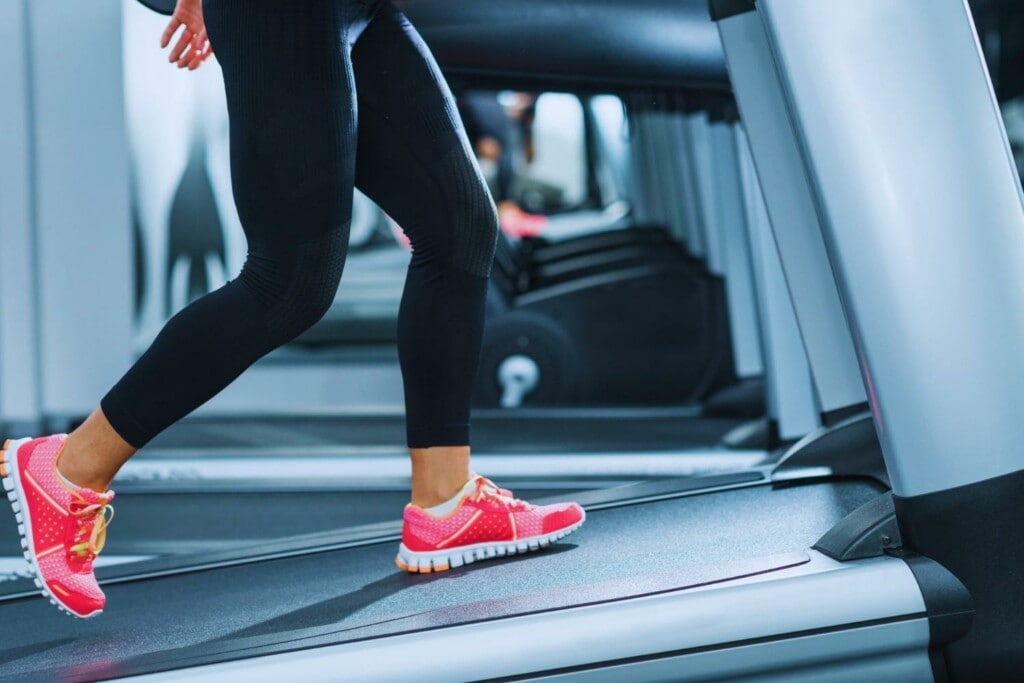
You can also use them for walking as a warm-up or cool down for your gym workouts. A good warm-up for a strength workout can include 5-10 minutes of jogging slowly and gradually, increasing to a relaxed run on the treadmill, followed by your normal strength exercises.
Alternatively, to cool down after an intense cardio workout (like a spin class, for example), 5 to 10 minutes of jogging slowly, decreasing the speed until you start walking, can be a great way to reduce your heart rate before you head home.
What Are the Differences Between Running Outdoors and Running on a Treadmill?
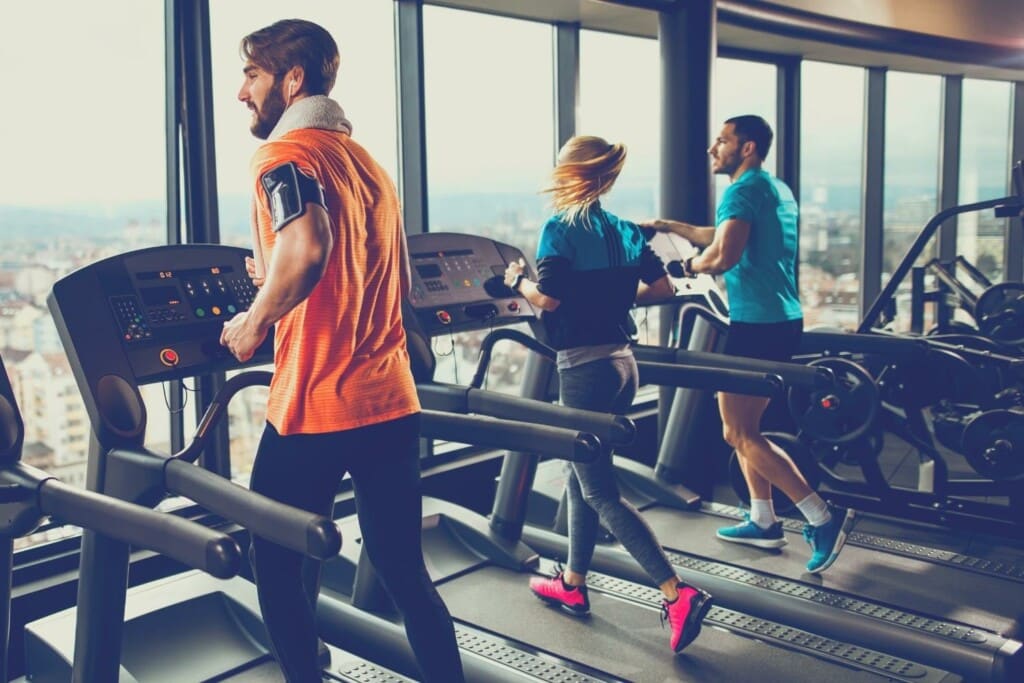
One of the big questions many runners ask is the big difference between indoor running and going out for an “old-fashioned” outdoor workout. Besides the obvious (you’re inside!), here are some things to be aware of.
Treadmill running can be more repetitive and have more impact than outdoor running
When you run outside, you naturally have to change your stride and pace to adapt to whatever you encounter. This goes from traffic lights to people to trails and trail obstacles if you go off-road. This means your body doesn’t get locked into a repetitive running pattern, moving more naturally.
Is this an issue? Maybe not, if you have a proper treadmill running form and a good running shoe to support you. However, you could pick up injuries (4) from doing it wrong. To avoid this, check out our training tips and advice on developing a proper running form for the treadmill below.
Also, bear in mind that this aspect can be contentious. Some research suggests that treadmill running leads to a shorter stride length (5). In turn, it can reduce the risk of common running injuries like knee pain.
Treadmill running can be very controlled
Unlike the outdoors, where you have no control over the weather or outside conditions, you can pretty much influence everything indoors (especially if you’re at home!). For example, this can be great if your running goals include a desert race and you’re training in the winter. Put the heating up, layer up, and sweat away! It can be an issue if you want more variety.
Additionally, treadmills allow you to control every aspect of your run – down to .1 mph speed. This can be great for focusing on recovery when you start running after an injury or for beginners.
It can cost a lot more to run on a treadmill. If you run outdoors, in theory, all you need is a pair of running shoes, and you can be on your way. Most people need to go to the gym for treadmill running and pay for a subscription. Alternatively, buying your own machine can be expensive, as can the cost of running it once you have one.
This is where the pros and cons of treadmill running become most obvious, too.
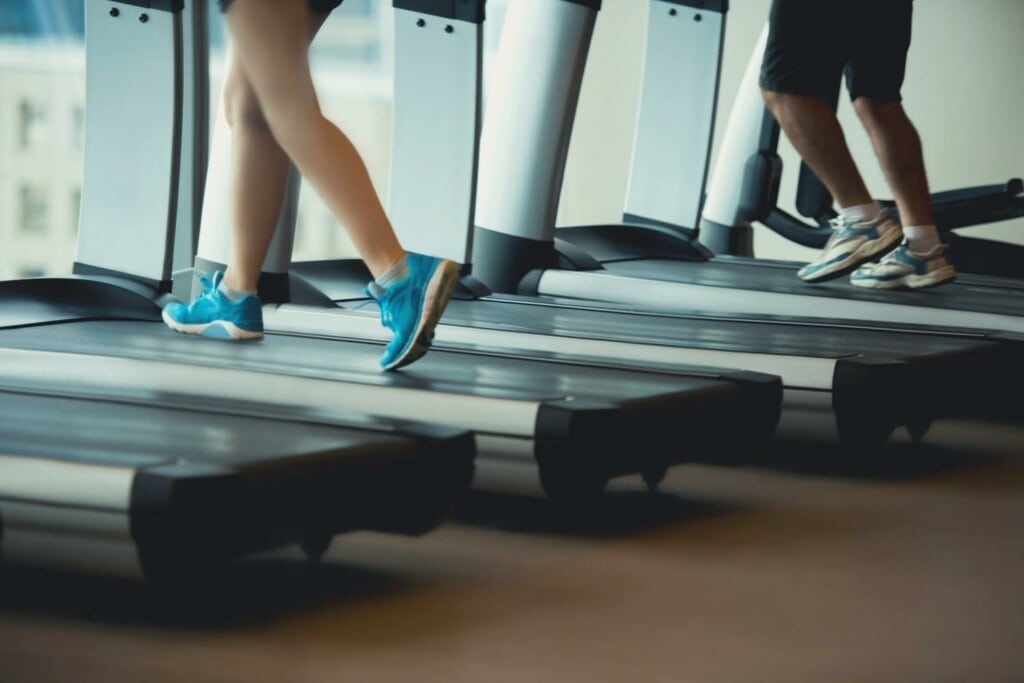
Pros of running on a treadmill
Thanks to a treadmill, you can:
- Control your environment to a high degree;
- Work on very specific aspects of your running form, speed, or incline;
- Use it for short recovery sessions with a running coach when coming back from injury;
- Try to replicate an outdoor route almost precisely – for example, a future race;
- Work on heat adaptations;
- Conveniently use running to warm up or cool down at the gym before and after a strength session or a group exercise class.
Cons of treadmill running
On the other hand, there are a few disadvantages to using a treadmill:
- They can lead to injuries if not used correctly;
- They can’t replicate the mental health benefits (6) of an outdoor run;
- Can be loud and costly to run at home;
- It can take up a lot of space at home;
- Maintenance of treadmills usually requires a professional;
- Running on a treadmill can get boring.
Get Started with Treadmill Running: Top 5 Tips
If you’re a complete beginner and want to give treadmill running a go, the great thing is that it’s as easy as going for that first run outdoors. Here are five essential treadmill running tips to get you started.
Be safe
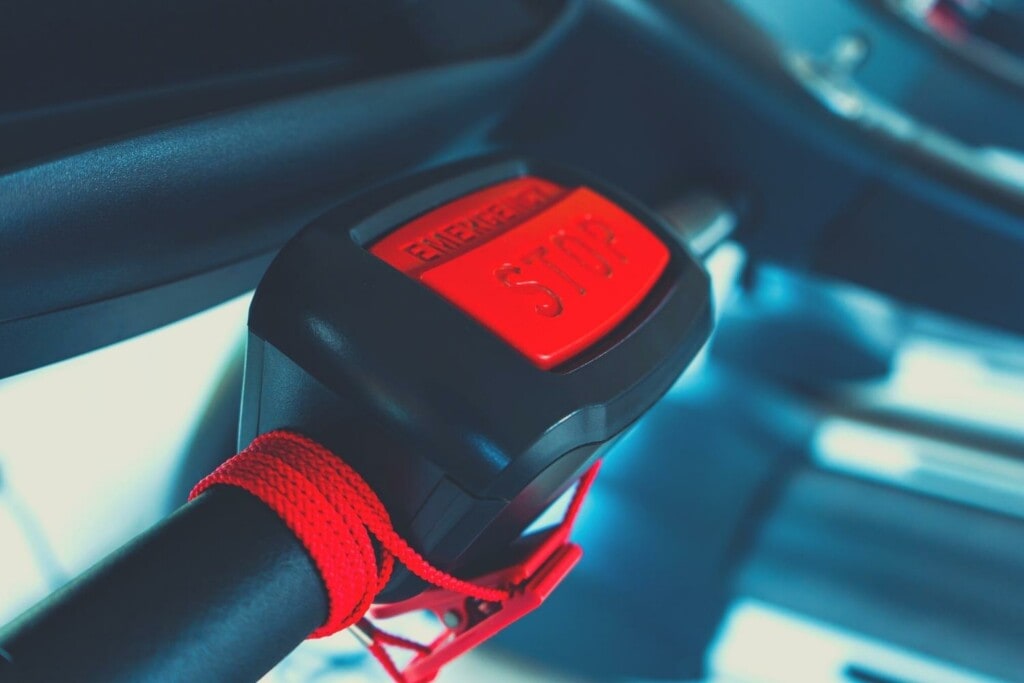
Don’t get too confident from the start! Do a proper warm-up by slowing your pace and settling into a speed you feel confident maintaining on the moving belt. Experiment with increases in incline and speed during your training session. However, always attach the safety toggle that treadmills usually have to stop the machine if you’re unable to keep the pace.
Finish with a proper cool down. You can revert to a slow pace down to a walk while relaxing for a few minutes and observing your heart rate decrease.
Choose the right shoes
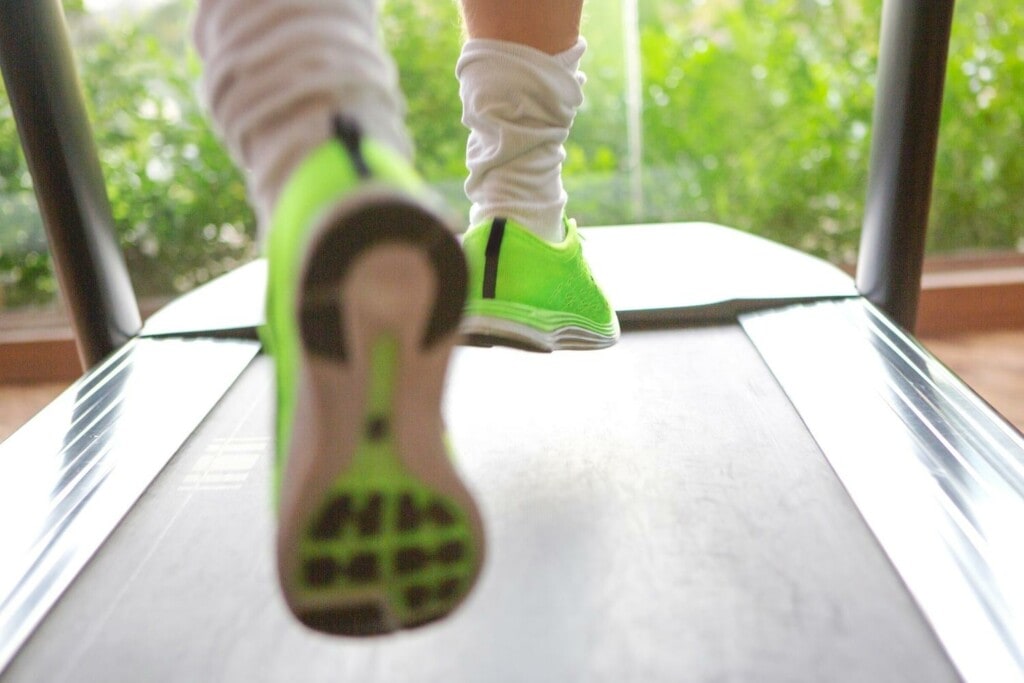
Just like running outdoors, you need to have the right running shoes for your treadmill workout. Please look at our roundup here to find the best ones to suit treadmill running.
You should look for good cushioning and support, but also make sure your shoes get good reviews for breathability, as running indoors can get very sweaty!
Have a plan
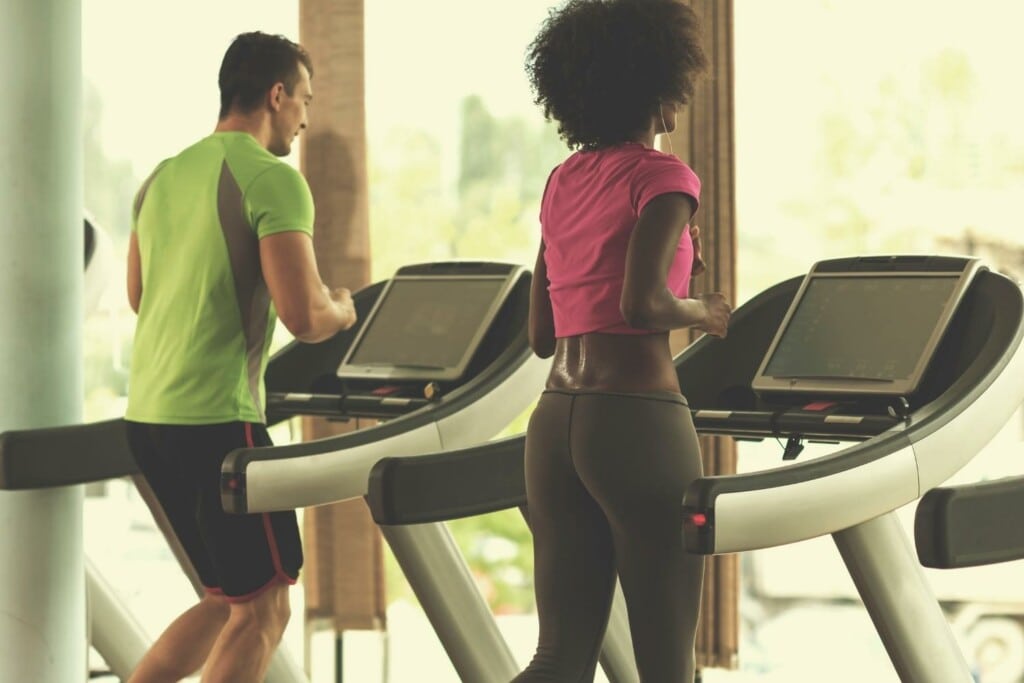
The first few weeks of running on a treadmill can be interesting enough, but you’ll soon need more stimulation if you’re not already using the treadmill as exercise equipment to help prepare for a specific goal.
You can start diversifying your running by choosing a built-in treadmill workout or joining a class with a dedicated beginner treadmill workout at your gym. Alternatively, pick one of these easy treadmill workouts:
- Classic intervals: Warm up for 5 minutes, then move into a pattern of 5 minutes at a fast pace, 3 minutes at a recovery pace – repeat 5 times. Cool down for 5-10 minutes.
- Hill work: Gradually increase from a 2% to a steep incline (depending on your fitness level, this can be up to 15%!) after a 10-minute warm-up. Do 1-2 minutes at each incline level, then decrease to a steady pace on the flat for 5 minutes, then cool down.
- 800-meter repeats: Switch to distance markers and do a 20-minute warm-up followed by 5 times 800 meters fast, with a 1-minute recovery in between. Cool down for 20 minutes.
Make it fun
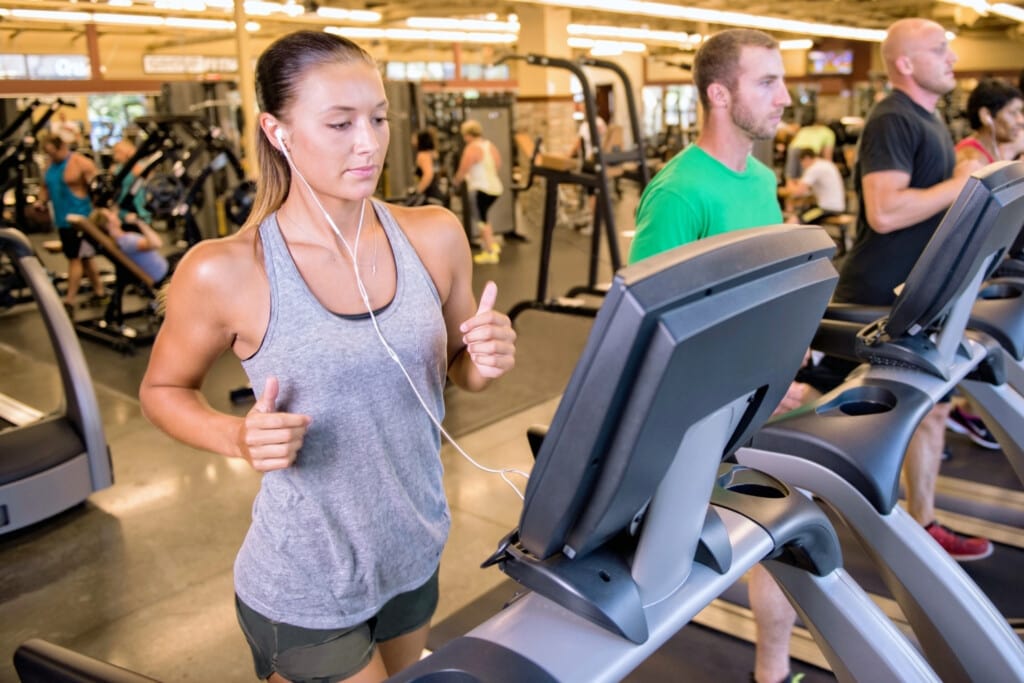
To avoid boredom when you run on a treadmill, influence your environment by listening to music or watching TV (available at most gyms). Join a class, a group challenge, or do a training session with your friends.
If you have your treadmill at home, try to place it somewhere that will stimulate you: in front of a window where you can see incredible scenery straight ahead is ideal, but as most of us will have ours in a garage, how about putting a cool motivational poster in front of you?
Develop good running form
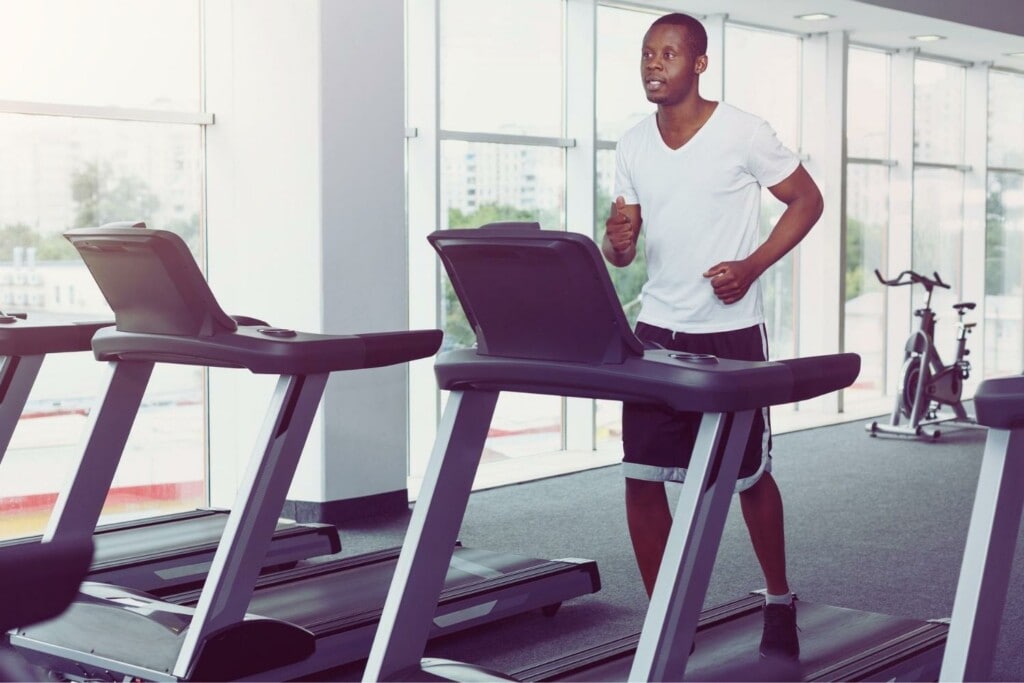
To avoid injury and enjoy treadmill running for a longer time, you’ll need to spend a few sessions working on developing good form. This is very similar to working on proper form when running outdoors, including tips like:
- Keep your body upright (not slouching);
- Keep your shoulders relaxed;
- Avoid over-striding and focus on landing lightly on the belt;
- Keep your body centered: when your arms cross in front of you or you’re leaning forward too much, you adopt an inefficient running form that wastes energy and aerodynamics.
If you start slow and think of these technique cues from the beginning, you’ll learn what good form feels like before you become distracted by other points of focus, like speed or distance. But, to make it easier for new runners, we also advise watching a few technique-focused videos like this one and this one.
Conclusion: Treadmill Running from A to Z
Running on a treadmill can be fun and rewarding. But you need to have a plan and follow a few treadmill running tips to keep you safe and injury free. Whether you join a class, use the treadmill for a warm-up and cool-down sessions, turn to treadmill running to avoid bad weather or work on specific elements of your fitness, there’s something for everyone!
Ultimately, the best treadmill workout is the one that works for you and your goals. Please do your research, try a few different options, and don’t be afraid to mix it up even after you feel you’ve become a treadmill pro!
References
https://www.sportsrec.com/treadmills-work-4569789.html
https://simplifaster.com/articles/curved-treadmills-pros-cons/
https://jonaschiropractic.com/can-running-on-a-treadmill-cause-injury/
Influence of Stride Frequency and Length on Running Mechanics
Schubert AG et al. (2014)
Sports Health
https://www.ncbi.nlm.nih.gov/pmc/articles/PMC4000471/
https://www.webmd.com/fitness-exercise/how-running-affects-mental-health

